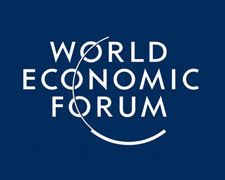Emerging

In the months leading up to WEF at Davos, there's been a running dialogue about how to characterize the emerging markets. The term BRICs, created by Jim O'Neill, has met expectations and those four engines of growth, particularly China and India, now play major roles in setting the pace of the global economy. So what to call the "next" emerging economies?
As terms such as "growth markets" and the Next Eleven (including Indonesia, Turkey and South Korea) circulate, what does it mean to understand the pulse and the growth trends in these economies? As CEO, what does it mean to be prepared for understanding the needs of consumers in your key markets?
Undoubtedly, a lot of this is being discussed behind closed doors (ones beyond which few have access), definitions for the future of how we invest in these markets, identifying the trends to understand how to approach new markets, and so on. But as Mr. Ghosn conducted interviews this week, I am reminded that what helps anyone to understand a culture -- and its markets -- is to experience it from within. Mr. Ghosn has clearly done this in many ways. With Al Arabiya, he spoke in Arabic; with France 24, he spoke in French; used English for CNBC, BBC and Brazilian for TV Globo. Clearly, understanding goes beyond language and gesture, but communication is key.
During a recent interview in New York City, when asked what trends he saw in the so-called emerging markets, as it relates to the auto industry, he mentioned two. One is that a car purchase is a big event for someone who has never before owned a car. The whole family can get involved, discussing the color, the model, the specs. Another point he made was the sense of a "tremendous hope" of a better future in these cultures. "This kind of optimism, vibrant sense that you feel in China, India, Brazil, Russia. And different degrees with different cultures."
In an environment such as Davos, "global" is the norm -- in a way that the term "BRICs" has exhausted its definition. It makes one think that identifying and redefining needs about what it means to be "global" and what it means to be an "emerging market" deserve to be reset. Like Nissan rethinking the typical car -- getting rid of the engine, the gasoline and tailpipe -- we can rethink the terms that help us to understand how economies and cultures are integrated, and better plan our approaches.
The similarities between China, Russia, India and Brazil – which are the four big emerging markets – one is that the car is the most desirable object. People say maybe the car isn’t as important anymore, and it’s because we’re living in a mature market with three cars in every household. [Because you already have two or three.] Exactly. I’m not sure I’m going to renew the third one. [Laugh]
But for someone who has never driven a car, a new car, the car is an object of…the family comes to buy the car, it’s a big event. You talk about it. You choose a color. It’s collective. It’s such an important act in emerging markets. That’s one thing that is common in emerging markets.
Second thing, this kind of tremendous hope of a better future. These are countries where people have absolutely no doubt that tomorrow is going to be better than today. They know that. Maybe it won’t be. But there’s no doubt that tomorrow will be better. This kind of optimism, vibrant sense that you feel in China, India, Brazil, Russia. And different degrees with different cultures. It’s amazing. This is another common point.





Post new comment